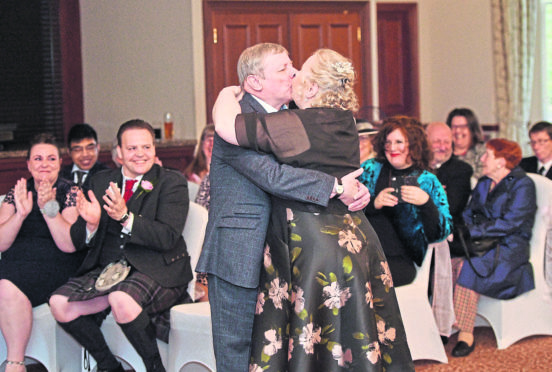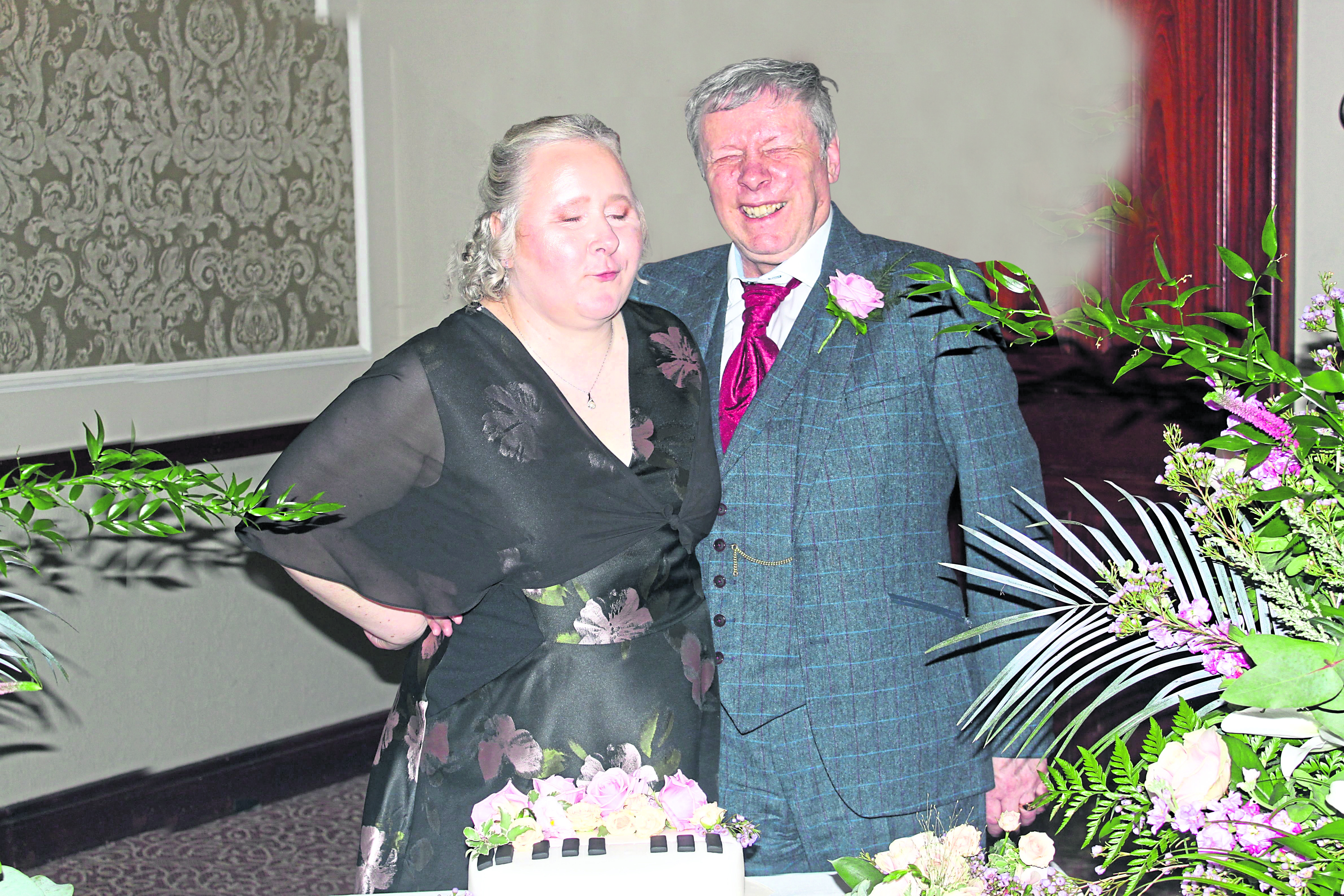
A blind bride has revealed how she might never have found love if it wasn’t for benefits that are now under threat.
Amanda Foster says welfare cuts linked to austerity mean people with disabilities are unable to afford everyday technology that improves their lives.
Amanda says assisted technology, like screen reader software, is a vital resource that helps those who are visually impaired to access information or mainstream technology independently.
The device led to her meeting now-husband Richard Foster, who is also blind, when they bonded over their love of The Archers on an online forum for the Radio 4 show four years ago.
After several months of emails and phone calls, Amanda met the 68-year-old from Sussex in person and they hit it off.
Richard moved to Aberdeen to live with Amanda and they were married last month.
“I just had my first Christmas as a married woman. Richard just gets lovelier and lovelier and I am so grateful.
“It’s terrible to think I would have missed out on all of this without assistive technology.
“This technology is essential for visually impaired people like me and Richard, but we need financial support to afford it.”
It certainly comes at a cost. Amanda has had to shell out £5,000 to purchase the tech in the past two years alone.
“After a long time of very difficult saving I was able to buy assistive technology, which I rely on to use a microwave, a phone and a computer,” she said.
“When I’ve had to go without that in the past because I couldn’t afford it, I found it really hard to find support, contact people or take part in social activities. It really affected my confidence.
“But being able to send emails, use the internet and make calls has allowed me to live a full life.”
“The UK Government needs to rethink how it does things for people on low incomes and for disabled people. Social security payments need to be enough so we all live dignified lives.”
Amanda, who was born blind, relies on social security payments but says her income isn’t always enough to balance the high cost of living with a disability.
“I tried to find work but it was impossible. Since then, social security payments have been an anchor,” said Amanda, who has £937 to live on a month.
“But the value of social security has fallen over the last decade so it’s barely enough to make ends meet, and being disabled comes with additional costs.”
Universal Credit and social security payments fell to 12.5% of average earnings last month, and are now at their lowest since the creation of the welfare state in 1948, according to the Institute for Public Policy Research.
“I have friends who’ve fallen behind on household bills just to put food on the table. I’ve often found it hard to afford healthy, fresh food myself,” said Amanda.
“Transport costs are limiting too. Seeing loved ones can become a luxury. It makes you socially isolated.”
According to Scottish charity The Poverty Alliance, one in four disabled people in Scotland is trapped in poverty.
“That statistic is not acceptable and Amanda’s story shows the isolation that can come from living on a low income,” said the charity’s director, Peter Kelly.
“Over the last decade, the value of social security payments has fallen, leaving people struggling to make ends meet.
“The UK Government must increase benefits to ensure they meet people’s needs.”
Since 1948, welfare payments have plummeted from 20% of average earnings to a current frozen rate of 12.5%.
In a recent report, the IPPR stated the government needs to invest at least £6.6 billion to keep the welfare system afloat.
“Social security should offer a safety net, not a tightrope over poverty,” said Clare McNeil, the associate director of the IPPR.
“It is remarkable that in post-war Britain the support for those living in poverty was closer to average earnings than it is today.
“This is the very simple fact that lies behind the record levels of personal debt, rising use of food banks and increasing destitution that we see in the UK.”

Enjoy the convenience of having The Sunday Post delivered as a digital ePaper straight to your smartphone, tablet or computer.
Subscribe for only £5.49 a month and enjoy all the benefits of the printed paper as a digital replica.
Subscribe